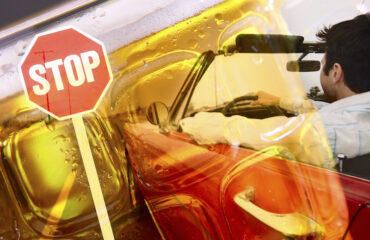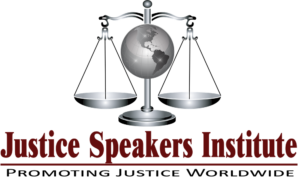By Guest Author: Professor John Kwasnoski
Motor vehicle crash cases have become more and more technical with the evolution of so many forms of digital evidence and the prolific use of expert testimony in both civil and criminal cases. Computer animation and simulation are commonly offered into evidence, along with the digital data from cell phones, GPS systems, vehicle event data recorders and engine control modules, and the infotainment system whose screen is part of the dash of newer vehicles. It is common for an crash reconstruction expert to be offered to the Court to assist the trier of fact in both criminal and civil cases which result in serious personal injury or death. The foundation for a collision reconstruction is the study of physics, which is often presented in expert reports with supporting mathematical equations and calculations. At minimum, an understanding of the scientific language is essential to deciphering what is actually being opined.

As the gatekeepers, judges must have a rudimentary understanding of the science
Under Federal Rule 702, the task of “gatekeeping”, or assuring that scientific expert testimony truly proceeds from “scientific knowledge”, rests with the trial judge. A judge may also be asked to rule on a variety of pre-trial motions which seek to exclude or limit a reconstruction expert’s testimony or to exclude a certain piece of evidence at trial. The judge may rule on the qualifications of an expert and the admissibility of the expert’s testimony based on a Frye1 or Duabert2 standard. This requires the trial judge to ensure that the expert’s methodology is “generally accepted by experts in the particular field in which it belongs” or that testimony is “relevant to the task at hand” and that it rests “on a reliable foundation”. To do so the judge may conduct a hearing in which experts for both sides of the case testify. So here’s the challenge for the judge – to understand the scientific vocabulary the crash reconstruction expert uses – which may be just as perplexing as medical testimony offered by doctors. How does the judge act as gatekeeper if both experts sound believable, but the judge doesn’t really understand their language?
As an example, an expert testifies that, “The vehicle maintained a constant speed of 35 mph as it accelerated through the turn.” A lay person might think “you can’t maintain a constant speed and accelerate at the same time”. But, in fact, you can, and the mistaken response occurred because of a misunderstanding of the term “accelerate”. According to Newtonian physics, acceleration occurs whenever the velocity of the vehicle changes (in any way), so that the vehicle accelerates 1) when the vehicle speeds up (the common interpretation of the word), 2) when the vehicle brakes and slows down (this is called negative acceleration), and 3) when the vehicle changes direction (because the term velocity includes both speed and direction). All three of these changes in motion require a net force to create the change in motion – a relationship stated in Newton’s 2nd Law of Motion. So judges may need some knowledge of physics to understand the experts’ testimony before they make a pre-trial ruling or render a decision in a jury-waived trial. Simple negligence, gross negligence, and proximate cause are part of the judges’ legal lexicon, but they may not have a working knowledge of the scientific vocabulary the expert uses.

Crash reconstruction experts may distort the science in reaching their opinion
In a case in which the length of skid marks (evidence of braking distance) is used to estimate a vehicle’s pre-skid speed an expert attacks the calculation, called the speed-from-skid marks equation, because the vehicle weight is not included in the equation used to calculate speed. This equation, one of the most basic in collision reconstruction appears in every reconstruction text, and has been validated numerous times in testing. Newton’s 2nd Law explains why the weight of a vehicle does not affect the distance it takes for a vehicle to stop once the brakes have been activated (called the braking distance), which is counter-intuitive. The vehicle weight is a factor in creating the friction force that brings vehicle to a stop, so a heavier vehicle (with greater inertia) creates proportionally more friction force. So why would testing with a tractor-trailer and a car, braking side-by-side, show the truck had a greater braking distance than the car? Not because of weight. In fact the tractor trailer’s longer braking distance is the result of a pneumatic (air activated) braking system that has an intrinsic delay in the brake activation, and because the rubber compound of truck tires is harder and less frictional than car tires. A judge, relying only on lay intuition, might accept the argument that weight should be a factor in vehicle braking, which would lead to an incorrect conclusion.
Judicial training on the “science of collisions”

On March 15, 2017, at the Tennessee Judicial Conference, a presentation titled, “Scientific Concepts of Crash Reconstruction: Admissible Evidence vs. Junk Science,” was made by Prof. John Kwasnoski, a collision reconstruction expert of more than thirty years. Before the presentation several of the judges mentioned Rule 706, and said that they used the rule in medical cases because they had difficulty with the medical lexicon that the witnesses used, but they had not used a consulting expert in a motor vehicle case. The presentation included several examples of experts who offered “junk science” opinions. In one case the expert admits, “I just made it up as I went along.” in response to a request for a published reference to validate his sworn testimony.
The presentation included a number of examples of junk science taken from actual cases in which Prof. Kwasnoski had been involved, and in each example the judges were challenged to recognize whether or not the scientific foundation for the expert’s opinion was valid. The expert offering the “junk science” opinion may have sounded believable to a person with only a lay understanding of science, and yet a completely false opinion was offered.
Judge Leon Burns (Ret.) commented, “Prof. Kwasnoski’s presentation was certainly eye opening and presented in such a dynamic manner that everyone gave undivided attention for the entire session and wanted more. The lessons from the presentation were clear – in order to make rulings involving crash reconstruction experts a judge must have a rudimentary understanding of the scientific foundation for the expert’s opinion(s), and should consider involving a 706 consultant, if helpful to the trier of fact.
1 Frye v. United States, 293 F. 1013 (D.C. Cir. 1923)
2 Daubert v. Merrell Dow Pharms., Inc., 509 U.S. 579, 584-587
John Kwasnoski is Professor Emeritus of Forensic Physics at Western New England University in Springfield, MA after 31 years on the faculty. He has consulted on more than 1300 collision reconstructions, and has offered sworn testimony on more than 200 occasions. He has presented seminars for attorneys in all fifty states, and is one of the authors of the NDAA “Lethal Weapon” course for prosecutors.
Get more articles like this
in your inbox
Subscribe to our mailing list and get the latest information and updates to your email inbox.
Thank you for subscribing.
Something went wrong.






